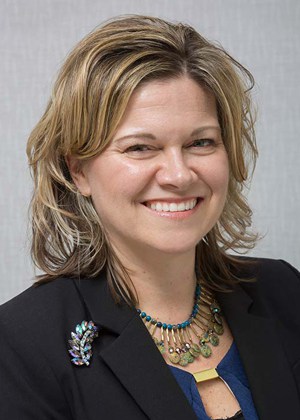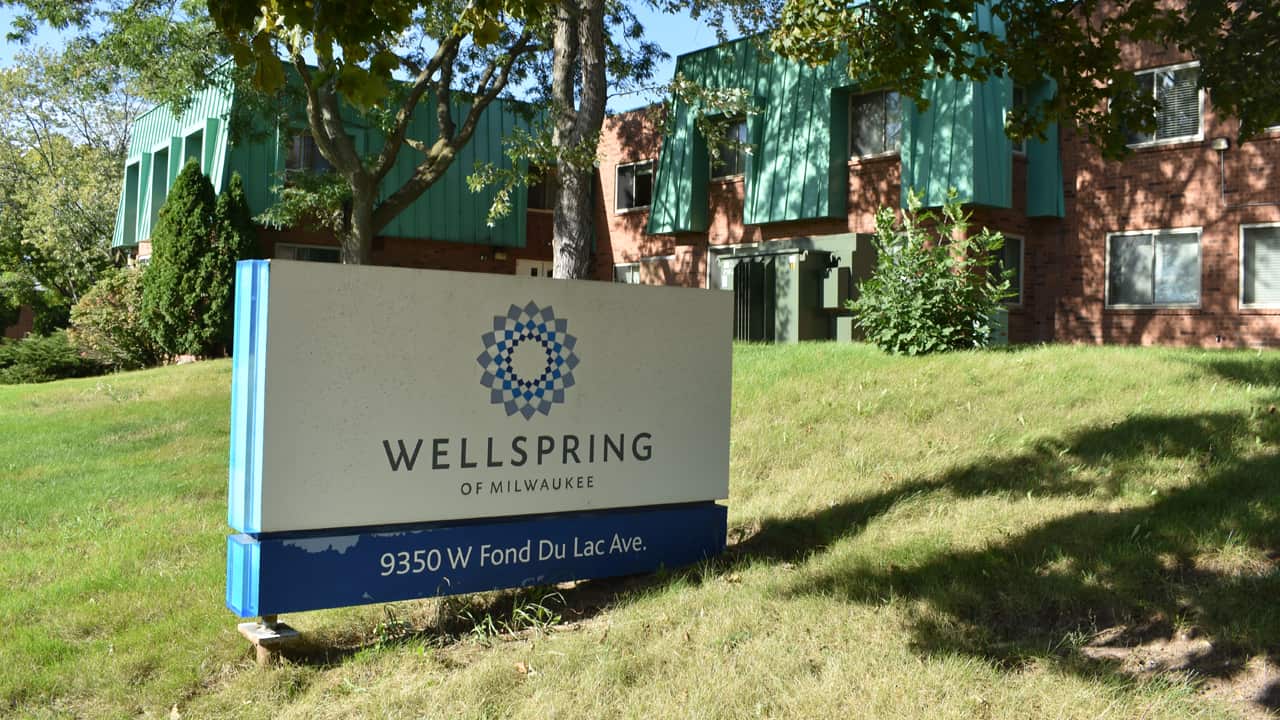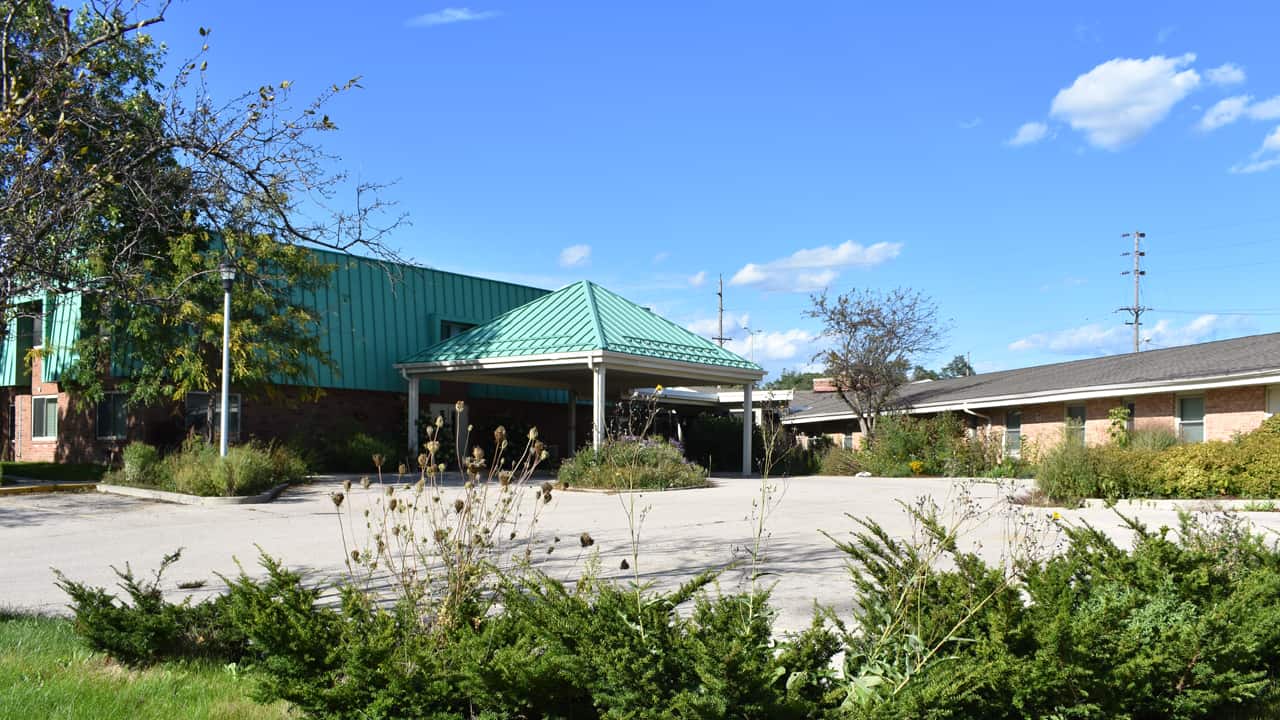In April, Julie Thauer’s 91-year-old mother, Nancy, suffered a stroke, and her assisted living facility could no longer provide the services she needed. She had to move.
Once she began researching her options, Thauer, a Shorewood resident, was confronted with a number of roadblocks.
Thauer’s mother, a woman she describes as a 1950s homemaker who went on to “do her best to live on what she had” after her husband died, had run out of money to pay for her long-term care, left to rely solely on government assistance.
When Thauer attempted to get her mother into a 5-star rated nursing home facility, as measured by Centers for Medicare and Medicaid Services, she was turned down because of her “payer source.” The implication was that the facilities preferred a private payer, as opposed to government-funded Medicaid, which reimburses nursing facilities at below cost. Medicaid is a federal and state government program that covers medical costs, including nursing home care, for people with limited financial resources.
Lower-rated facilities presented other challenges. Thauer had concerns about quality, and they were farther away from her than she preferred. One turned Thauer away, citing a recent influx of patients from another area nursing home that had just closed.
She was left with few options.
“What I was told is, ‘You’re not going to be able to get into a five-star (facility). You’re going to have to accept a one- or two-star,’” Thauer said. “But if you’re looking at someone needing 24-hour care and they have bedsores, you’re sentencing them to death. Money is what makes the difference.”
Thauer’s experience underscores the financial challenges faced not only by families seeking care for their loved ones, but also an industry that’s up against serious headwinds, including low government reimbursement rates, a severe workforce shortage and a swelling patient population.
As of August, 12 Wisconsin nursing home facilities have shuttered their doors, or are in the process of closing, this year alone.
Wellspring of Milwaukee, a 185-bed rehabilitation and skilled nursing center on the city’s northwest side, closed in March, forcing the relocation of its residents and elimination of 160 jobs. The facility’s notice filed with the state Department of Workforce Development attributed the decision to “catastrophic unforeseeable business circumstances.”
In April, eight Dycora Transitional Health & Living skilled nursing facilities in Wisconsin, including two Glendale locations and a Greendale location, were placed into receivership, an alternative to bankruptcy under Wisconsin state law.
That followed similar actions taken at The Atrium of Racine, a 76-unit senior housing facility and 40-unit assisted living facility, in fall 2018.
Milwaukee-based Fortis Management Group, which operated 65 long term care centers in six states, also filed for receivership in July 2017, ultimately closing its Milwaukee headquarters and laying off 250 employees in fall 2018.
A total of 34 facilities in the state have either closed, or are in the process of closing, since 2016. Medicaid losses are a significant contributing factor, industry representatives say.
A 2016 study from national accounting and consulting firm Eljay LLP ranked Wisconsin as having the highest daily shortfall per Medicaid patient in the country.
Wisconsin’s skilled nursing facilities on average lose between $70.66 and $78.58 per day for each Medicaid resident they serve, according to a study by LeadingAge Wisconsin, a statewide membership association of nonprofits that serve aging adults and people with disabilities.

“Reimbursement for Medicaid services has never been particularly lucrative,” said John Vander Meer, president and chief executive officer of the Wisconsin Health Care Association and Wisconsin Center for Assisted Living. “But in the last 10 years, there has been an increasing payment gap between the level of reimbursement that skilled facilities receive on a per-patient per-day basis, compared to the cost they sustain … We in Wisconsin have in the last 10 years routinely been in the top 10 worst reimbursed states in the country.”
Vander Meer said the funding gap can, in part, be attributed to the high quality of care provided in Wisconsin.
“Quality costs money,” he said.
But even as increasing acuity levels lead to higher costs for facilities, the state has largely seen minimal increases in the Medicaid reimbursement rate over the past decade.
At Milwaukee’s Ovation Communities, the shortfall is more severe, about $150 to $200 per day per Medicaid patient. Michael Sattell, president and chief executive officer of Ovation, attributes that to the higher costs associated with running the Jewish senior living center on Prospect Avenue, which is a kosher facility and has had to increase its security in recent years.
“Arguably our gap is higher than most, but I don’t think there’s any provider out there that’s not losing money with Medicaid,” Sattell said.

That means cost-shifting onto private payers. The same 2018 LeadingAge study found private pay residents pay $41,000 more annually than Medicaid residents – about $100 more per day – because of the shortfall, which in turn depletes residents’ assets more quickly.
In addition to cost shifting, providers have responded by shifting their continuum of care to achieve a viable mix of nursing, assisted living and senior housing services. Often, that means downsizing their nursing home operation and expanding their assisted living arm, which means fewer available beds for those needing more intensive, around-the-clock care.
“It’s a delicate model,” said John Sauer, president and CEO of LeadingAge Wisconsin. “Facilities are looking at what is the maximum number of Medicaid residents they can serve and still be able to meet their budget, make payroll, staffing wages and benefit needs within the organization. What I think people are starting to realize, because Medicaid has been paying at such a low rate compared to cost, is that there is starting to be access issues for someone on Medicaid needing nursing home care … We’re seeing that in many areas of the state.”

Ovation leaders said that it’s part of their mission to provide care to the Jewish elderly community, regardless of residents’ ability to pay out of pocket. About 70% to 75% of their residents rely on government assistance, Sattell said. The organization, a nonprofit, leans on philanthropic support to help offset the cost, but it’s becoming more difficult.
“We’re blessed to have incredibly generous people over the past several decades … but frankly it’s getting harder every year to raise more money,” Sattell said. “We don’t want to go into the principal of our endowments and we’re at the ceiling of our spending policy. I fear we’re going to have to make some decisions where we won’t be able to say ‘yes.’”
Workforce ‘crisis’
Compounding the issue is a serious labor shortage amid a sustained low unemployment rate in recent years.
In 2018, a survey of about 750 nursing home and assisted living care providers in Wisconsin found the state’s long-term and residential care facilities had about 16,500 vacancies for caregiver positions. The survey was released by a coalition of senior-serving organizations, including LeadingAge, Wisconsin Health Care Association, Wisconsin Center for Assisted Living and Disability Service Provider Network.
In that same study, about 83% of providers said there were no qualified applicants available for their key positions. Over half said they had not received any applicants for openings.
“It’s appropriately called a crisis,” Sattell said. “We know we’re not alone in terms of the difficulty finding people and keeping people in this low unemployment economy.”
Understaffing has hampered Ovation’s ability to accept new patients, hurting its bottom line.

“There have been times when we’ve not been able to take in admissions,” said Michelle Putz, chief operating officer. “We have to make sure we have enough people on staff to take care of people. We’ve had to limit admissions; that’s financially affected us.”
Ovation is working to confront those challenges both in the short- and long-term. Last year, it launched its own Geriatric Career Development program, which takes Milwaukee high students who are at risk of not graduating through three years of training to receive their certified nursing assistant (CNA) certifications. The program, which has 10 students returning for a second year and plans to scale up to about 45 total, draws from three Milwaukee Public Schools with the lowest graduation rates. The program costs about $5,000 per student, and was launched with financial support from LeadingAge.
The goal is two-fold: to mentor students onto a better post-high school track and fill the industry’s worker pipeline.
“So often we say ‘if we could only create our own employees,’” Sattell said. “That’s what we are doing hopefully for the city and community of Milwaukee.”
While that program could pay long-term dividends, Ovation has focused on retention to address its immediate workforce challenges.
Strategies have included offering job sharing and other flexible scheduling, providing a wellness program, offering an employee award program that includes financial awards for high performance, and integrating more fun in a work environment that can be taxing.
“Our employees work very hard; it’s very stressful being in caregiving jobs,” Putz said. “They need to be celebrated, so we’re trying to find more ways to do that.”
The average hourly pay for a certified nurse assistant in Milwaukee ranges from $11 to $16. Employers largely attribute their inability to raise wages to the state’s low Medicaid reimbursement rate.
Ann Louise Tetreault, vice president with SEIU Healthcare Wisconsin – which represents about 4,000 health care workers in the state – said many CNAs opt to leave for higher-paying jobs elsewhere – jobs that are less physically and emotionally demanding.
“People are finding they can work in a fast food facility and make more money,” she said. “They’ll go to Home Depot, Burger King or someplace else. You’re going to pay someone more to flip a hamburger than take care of your loved one? (Caregivers) should make $15-plus.”
Prior to Wellspring of Milwaukee’s closure, the union had been bargaining for higher wages, Tetreault said.
She said organizers were told the long-term care facility was in “OK shape” financially, yet they were unable to negotiate a pay bump.
“We couldn’t even get to $9 (an hour),” she said. “That’s with workloads that are atrocious; it’s backbreaking. And work rules that are not bendable. You’re asked to smile while you do this heartbreaking work.”
Then the facility shut down, Tetreault said.
“They were planning and working with the Department of Health and Social Services to work on an orderly closure to find other beds (for residents to move to),” she said. “Then, before they could even get through the process they laid out, they didn’t even have food at the facility. They had to go into an emergency situation of diverting these patients.”
Wellspring representatives could not be reached for comment for this story.
For operators, Putz said, the stakes are high when it comes to employee burnout and turnover. More than ever, nursing facilities need well-trained workers to deal with an increasingly complex patient population.
“We’re a 24-hour business; we’re taking care of a vulnerable population,” Putz said. “In the last three to five years, the population has been more sick and coming in with more complicated social, economic and family issues. We need expertise. So how do we retain those folks who might not want a traditional 40-hour work week? We are taking care of a much more complicated resident population than ever before.”
That’s only expected to increase, Sauer said.
“As we age as a population and boomers move from ages in the 60s to 70s and 80s, the demand for skilled nursing facilities is going to increase,” he said. “Nursing homes will look different than they do now … Many hospitals are telling us they’re having a very difficult time placing certain individuals in nursing facilities.”
Future relief?
The state’s 2019-’21 biennial budget offers some relief for providers.
The budget, signed into law by Gov. Tony Evers in July, increases Medicaid reimbursement rates for nursing homes by 6.4%.
“What the Legislature did is they put together a long-term care package that in its totality, I would view, as unprecedented in terms of the funding commitment and scope,” Sauer said. “I don’t want to minimize it by saying it’s a first step, but it’s a really important first step to address long-term care needs for the state of Wisconsin. Is this going to solve the problem? No. But will it move us in a positive direction? We’re hoping those dollars get out there and are allocated to providers as quickly as possible.”

Sattell agrees that it’s a step in the right direction, but isn’t enough.
“There will be increases in the next biennium, which is great because there really hasn’t been in a long time … but even a 7% increase is not going to make a huge difference for the underfunding of senior care through Medicaid,” he said
Other solutions will need to address the workforce crisis, Sauer said. In addition to programs like Ovation’s Geriatrics Career Program, he said the industry needs to look at immigration as a potential pipeline.
“We need to look at workers from other countries who are willing to come here legally and work in long-term care,” he said. “The demographics are such that the ratio of workers to retirees is shrinking. I think we’ll have to look at immigration.”
Another answer could come in the form of technology. He said advancements are coming — and some have already arrived — that will allow for remote monitoring of patients, along with other telehealth solutions.
Advancements in robotics will also allow patients to age in place longer, offsetting their transition into assisted living facilities.
“I don’t want to get too overly optimistic about future trends in technology, but I just look at the trends that have happened in my lifetime,” he said. “And I think the acceleration of tech will have a positive impact on how we provide care and services.”
But there are limits to technology in the health care industry.
“We’re a person-centered business,” Vander Meer said. “You can’t get a machine to hold your grandmother’s hand when she needs to be comforted from a spell of dementia … These aren’t widgets; they’re people. And we have to have people who are well-trained and well-equipped and well-oriented from the standpoint of being the right caregivers to offer that care.”

Meanwhile, Sattell and Putz said they would like to get the word out about the importance of long-term care insurance.
“We do see some people with long-term care policies, but they’re few and far in between,” Putz said.
More people are simply outliving their money these days, she said.
“We’re seeing that at a dramatic, dramatic rate,” she said.
Thauer said her experience with her mother has taught her the wisdom behind long-term care insurance. It’s an education she said she’d rather not have had to learn the hard way.
“You have to go through this with a parent to realize you yourself are going to face this someday,” she said. “And it’s a big stack of money to be able to allow you to live in comfort and safety to the end of your days.”


